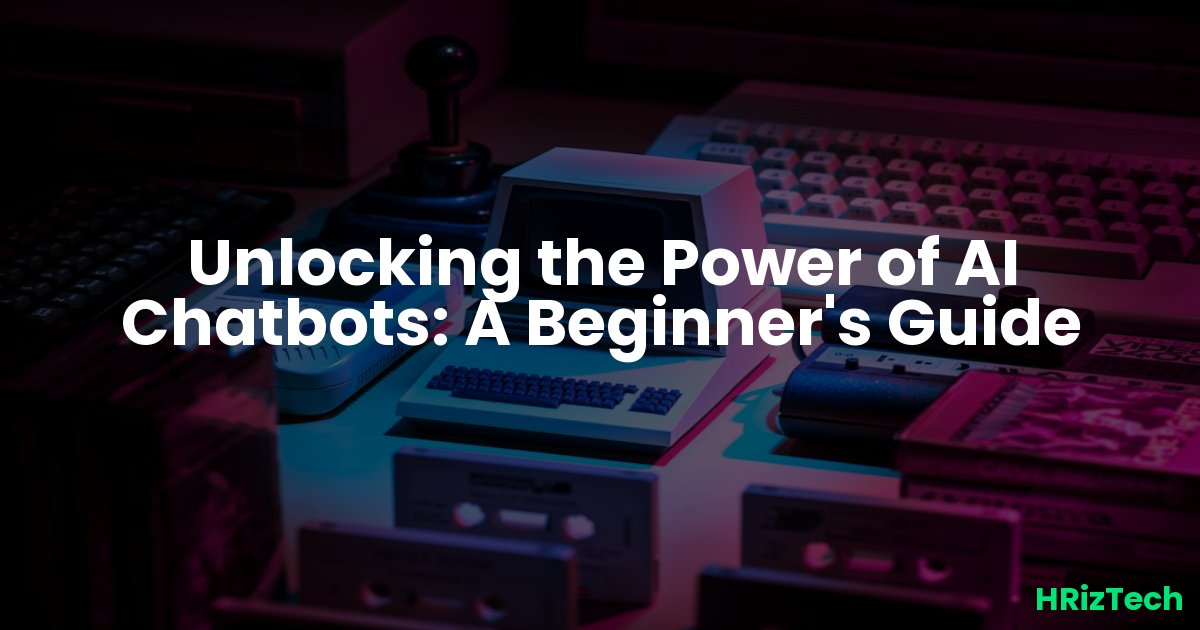Unlocking the Power of AI Chatbots: A Beginner's Guide

Unlocking the Power of AI Chatbots: A Beginner's Guide
Ever wondered how those super-smart chatbots work? They're popping up everywhere, from customer service to virtual assistants. Learning about AI chatbots isn't just cool; it's a crucial skill for the future. This guide will walk you through the basics, helping you understand and even build your own!
What are AI Chatbots, and Why Should I Care?
AI chatbots are computer programs that can simulate human conversation. They use natural language processing (NLP) and machine learning (ML) to understand what you're saying and respond appropriately. Why should you care? Because AI is a massive trend, and knowing how to work with it will open up tons of opportunities.
The Future is Now (and it's Chatty)
A 2025 Gartner report predicts that AI chatbots will handle 80% of all customer interactions. That's huge! Learning about AI chatbots now puts you ahead of the curve for jobs and entrepreneurial ventures in the future. The demand for AI specialists is only going to increase.
How Do I Start Building an AI Chatbot?
Building an AI chatbot might sound intimidating, but it's more accessible than you think. There are many platforms and tools that make the process much easier.
Step-by-Step Guide to Chatbot Creation
- Choose a Platform: Many platforms offer user-friendly interfaces, such as Dialogflow (Google), Amazon Lex, or Rasa. Each has its own strengths and weaknesses; research to find the one that best fits your needs.
- Design the Conversation Flow: Think about the purpose of your chatbot. What questions will it answer? What tasks will it perform? Map out the different conversation paths users might take.
- Train Your Chatbot: This is where you feed your chatbot data – examples of conversations and responses. The more data you provide, the better it will understand and respond to user input.
- Test and Iterate: Thoroughly test your chatbot and refine its responses based on user interactions. This is an iterative process; expect to make adjustments.
- Deploy Your Chatbot: Once you're happy with its performance, deploy it on your website, app, or messaging platform.
What are the Key Technologies Behind AI Chatbots?
Understanding the underlying technologies will help you build more effective chatbots. Natural Language Processing (NLP) is crucial for understanding human language, while Machine Learning (ML) allows the chatbot to learn from its interactions and improve over time.
Beyond the Basics: Exploring Advanced Features
As you gain experience, you can explore more advanced features like sentiment analysis (understanding the emotion behind text), intent recognition (determining the user's goal), and integration with other services (like payment gateways or databases).
How Can I Stay Ahead of the Curve in AI Chatbot Development?
The field of AI is constantly evolving. Staying updated on the latest trends is essential. Keep an eye on advancements in NLP, ML, and the development of new chatbot platforms. Cybersecurity concerns related to AI chatbots are also increasingly important; it's crucial to build secure and ethical systems.
What are Some Real-World Applications of AI Chatbots?
AI chatbots are being used in various fields, from customer support to education. They can automate repetitive tasks, provide personalized assistance, and even offer language translation services. The possibilities are vast and constantly expanding. Generic Tech Topic is becoming increasingly important in shaping these applications.
So, what are your thoughts? What excites you most about AI chatbots? What challenges do you foresee in the future of Generic Tech Topic?
This exploration of Generic Tech Topic, specifically AI chatbots, is just the beginning. Mastering these skills will set you up for success in the ever-evolving tech landscape of 2025 and beyond. The future of work is AI-powered, and being fluent in this language will give you a huge advantage.
What’s your favorite AI tool? Share in the comments!
Comments
No comments yet. Be the first to comment!